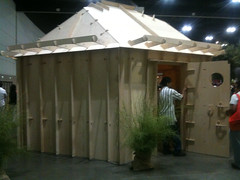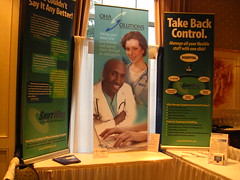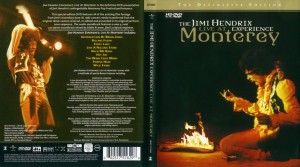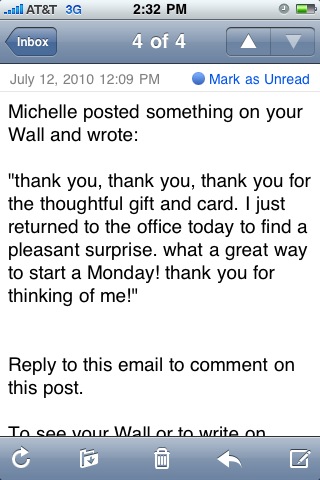13 Common Trade Show Mistakes (part 2)
Guest post by Mel White, VP of Marketing and Business Development at Classic Exhibits – see part 1 here
7. Poor Follow Up on Leads
Why would you bring your own rope to your hanging? And, yet, the vast majority of exhibitors spend considerable cash preparing and participating in a trade show and then neglect the leads they gathered at the show. Well, either they don’t value the leads or there’s no plan on how to handle them. Most of the time it’s the latter. What’s the saying, “Failing to plan is planning to fail.”
8. No Daily Booth Preparation

When your in-laws come to town, you spend days cleaning, organizing, and stressing over dust bunnies. Three days later, you don’t care anymore. There are dirty dishes piled in sink and clothes draped over the recliner. The same scenario happens for most exhibitors. They polish and preen for hours before the show opens, and then by Day Two, they ignore the smudges, the carpet boogies, and the stray candy wrappers.
Every day is a new day in Exhibit-Land. Like Disneyworld, it’s gotta look perfect before the guests arrive. Assign that task to someone every day and create a checklist. Otherwise, it won’t get done, or the person with initiative will do it and resent it.
9. Partying and Socializing
It’s a trade show. You’re suppose to socialize and party during the off hours. But . . . and here’s the BIG BUT . . . you need to be smart about it. First, you’re on company time. Even when you think you’re not on company time, you’re on company time. That’s just the way it is. If the company expects you to socialize with clients, then socialize and be on your best behavior. If someone has to tell you what that means, then you shouldn’t be socializing with clients.
Second, trade shows may seem like a friendly gathering, and they can be, but they are actually a competition. What you say, where you say it, and who’s around when you say it, can have painful repercussions for you and your employer. We are all on high alert for hints, innuendos, and outright gossip about our competitors. It’s amazing what someone will tell you, or someone next to your will reveal, after a few drinks.
Finally, and this should go without saying, socializing should not interfere with your show responsibilities. Pace yourself cowboys and cowgirls. Showing up at the booth sweating tequila (no matter how good the tequila was) isn’t attractive.
10. Packing and Unpacking
I know. You’re tired, and you want to get back to your room, the airport, or home. That’s understandable. We all feel that way. But how you unpack or pack your booth will make your life much easier or much harder. You know deep down in your heart that it’s the right thing to do. Ultimately, the key to any successful trade show is planning and organization.Your exhibit is no exception.
Carefully unpacking the exhibit and organizing the packaging materials makes the assembly go faster and the repacking much easier. You eliminate the head scratching that invariably occurs at the end of the show. When you take the time to repack the exhibit right, you ensure that the exhibit arrives at the next destination in good condition and ready for the next show. Think of your exhibit as yarn. You have a choice. You can either toss the loose yarn in the case and hope for the best. Or you can wind it carefully into a ball.
11. Participating in the Wrong Shows (not participating in the right shows)
This one is tough. Too often, you never know until you participate. It’s kinda like “Mystery Date” where you don’t know if the person on the other side of the door is “dreamy” or a “dude.” The best advice is to ask your suppliers or strategic partners who may participate in the same show. What’s their take on the trade show and has it been beneficial? If possible, ask for specifics such as lead numbers, sales from the show, and promotional ideas. What works and what doesn’t work.
In the end, you have to decide based on your own experience. Sometimes the show would have been better if only you had done this or that. That’s fine. You’ll make the adjustment next year. Other times, it wasn’t a good fit because you’re selling candy at a diabetics convention.
What you don’t want to do is allow tradition or momentum to dictate whether you participate. Just because you have (or haven’t) gone every year, shouldn’t determine whether you go or don’t go this year. Take the time to evaluate your marketing goals and determine whether the show contributes to those goals. If it does, then go.
12. Not Walking the Show and Talking to Competitors, Suppliers, and Potential Partners
It’s tempting to just hang out in your booth. After all, it’s safe and comfortable. But trade shows are two way streets. Potential customers are there to learn and discover new products, services, and suppliers. You’re there to work with those customers . . . but you’re also there to learn and discover as well.
Every show is an opportunity to improve your “game.” What are your competitors showing? What are they saying? Are there any new products or services which would benefit your company? Are there trends you’ve overlooked and need to study and implement?
No one is asking you to spy, but friendly conversation goes a long way with friends and foes alike. It’s all in your attitude and your approach. Don’t be afraid to say “Hello!” and ask how the show is going. You want to be seen as warm and friendly, and not as a medieval fortress with the drawbridge closed. Obviously the same rules apply as the “Party and Socialize” section — namely, you need to be smart about what you share (and don’t share).
13. No Pre-show Marketing
This may be last, but it’s certainly not least. In some ways, it should be #1 if only to get your attention. There’s no reason, absolute no reason (unless you want to fail) not to have a pre-show marketing plan. You can spend a little, or you can spend a lot. At a minimum, you should contact your customers to see if they are attending the show. What they tell you may influence what you bring to the show and what you feature in your graphics.
Beyond that, the opportunities are limited only by your imagination and your budget: from pre-show mailings and emails to advertising and contests, and from show sponsorships to industry press releases. You already spend much of your time trying to attract attention to your company throughout the year. Take that energy and creativity and apply it to your trade show marketing. If there was ever a venue for taking risks, it’s a trade show. The conservative, Namby Pamby approach rarely works in trade show marketing.
Be bold and beautiful my friend. The show starts in 5, 4, 3, 2, 1.
–Mel White

photo credit: emilyonasunday










